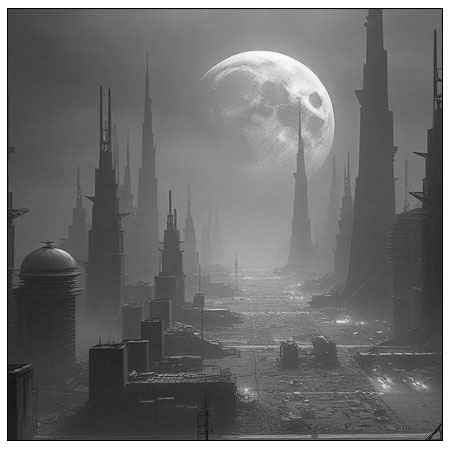
The skies, once clear and blue, now hung heavy with a permanent thick haze, a toxic veil cast over cities that had long since crumbled into ruins. The forests that once stretched continents had been reduced to sparse patches of struggling trees, and the oceans, poisoned by centuries of neglect, no longer teemed with life.
Humanity, having ravaged the planet for generations, had retreated into isolated enclaves, their technology more advanced but their connection to nature and the planet itself deeply fractured and scarred.
Yet amidst this bleak landscape, there were whispers of rebellion, of the Earth itself stirring, as if awakening from a long slumber. The planet, in its desperate fight for survival, had begun to reclaim what was lost, and its response was coming, slow but undeniable. A time of reckoning was nigh.
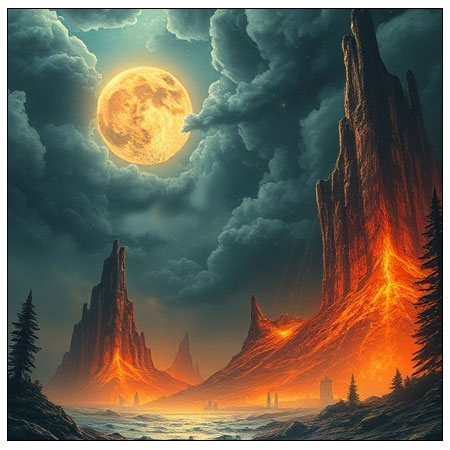
Climate disasters, resource scarcity, and socio-political strife had crippled the planet by 2345, leaving Earth in a state of relentless chaos. Extreme weather events, once considered rare, were now an everyday occurrence. Raging storms, wildfires that consumed entire regions, and seemingly endless droughts that turned fertile lands into barren deserts.
Freshwater became a luxury few could afford, and vital resources like energy, food, and raw materials were fiercely contested, leading to fierce conflicts over what remained. The once, stable governments had fractured into warring factions, each struggling to maintain control over dwindling resources, while corrupt elites hoarded what little wealth was left.
Society had fractured into a new class system, where the wealthy lived in fortified cities, while the masses in the wastelands fought for survival. The global community, once united in the promise of progress, had descended into an age of desperation, with survival itself now the greatest battle.
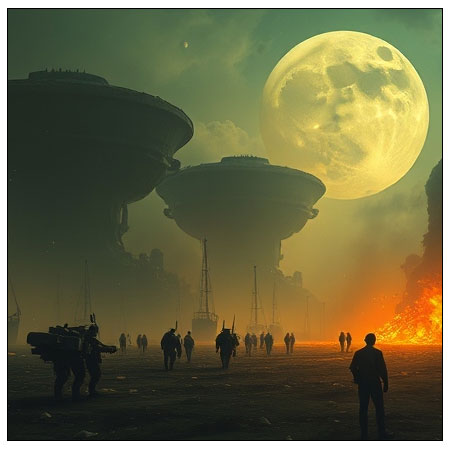
Humanity faced an existential level crisis by the year 2345, as the consequences of centuries of environmental degradation, over consumption, and unchecked technological advancement caught up with them.
The very survival of the human race hung in the balance as ecosystems collapsed, resources became nearly extinct, and climate change ravaged the planet with brutal intensity. Global systems of governance had failed, and a fractured world teetered on the edge of total collapse.
Famine, disease, and conflict were rampant, while entire populations struggled to adapt to the harsh new environmental reality. Hope had all but vanished, and the collective will to survive seemed to waver in the face of overwhelming adversity.
With each passing day, the question lingered: could humanity find a way to reverse its self-inflicted damage, or was the end of civilization inevitable?
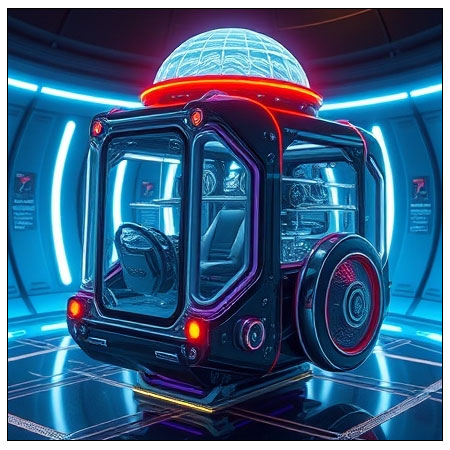
Despite the dire state of the world, the future held a glimmer of hope, technology capable of possibly altering the past to secure a better future. For centuries, time manipulation had been strictly prohibited, but in times of extreme desperation, rules were meant to be broken.
A decision was made to send the world’s most brilliant scientist back to the 21st century, burdened with a mission far greater than any before him. Rising from the remnants of a shattered future, he was entrusted with an impossible task: to change history and avert the catastrophic chain of events that had led to Earth’s downfall. Armed with knowledge of past mistakes, and future technology, he carried humanity’s last hope on his shoulders.
His journey was not only one of survival but also of intense ethical and moral responsibility, as he sought to convince a world unprepared for the magnitude of the crisis to change course, or face total destruction. Every decision he faced and every step he took, had the potential to either ignite a path to salvation or condemn humanity to its end.
The weight of the task was truly overwhelming, the stakes far more immense than any war, for the fate of the entire planet lay solely in his hands.
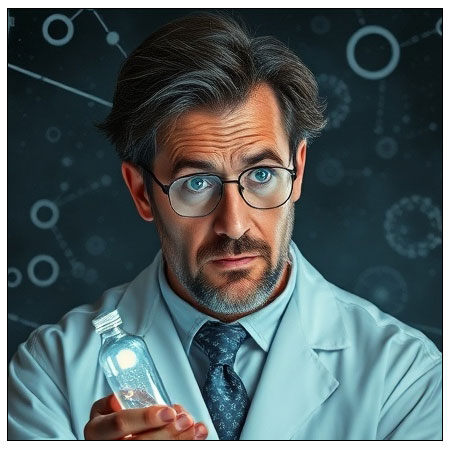
Leon Kusm, (pronounced Koo-Sum), a physicist, philanthropist and devoted dreamer, arrived back in the early 21st century, armed with knowledge of a future world doomed by its own negligence, greed, and shortsightedness. A man burdened with the painful awareness of Earth's imminent destruction, Leon was determined to change the course of history, despite the overwhelming odds.
His mind, sharpened by a lifetime of study and the harsh realities of a dying world, carried the answers to questions yet to be asked. However, he knew the people of this time, blind to the impending catastrophe, would be reluctant to heed any warnings. Armed only with the scientific principles and innovations that had been buried in the wreckage of the future, Leon sought to awaken humanity to the consequences of its choices before it was too late.
His mission was not just one of survival, but of redemption, a race against time to prevent the spiral of destruction he had witnessed, knowing that any failure would mean the end of humanity.

Leon, dazed from the time lag caused by the time travel instance, stumbled slightly as he tried to steady himself. His head throbbed, the disorienting effects of time travel lingering like a weight pressing on his mind. He squinted against the brightness of his new surroundings, feeling the warmth of the sun against his skin for the first time in what felt like an eternity.
As his vision slowly cleared, he gasped. Above him, the sky stretched wide and endless, a brilliant blue that seemed almost unreal compared to the thick, dark, ashen atmosphere of his own time. The air was crisp, the horizon unmarred by the smog and smoke that choked the world he had left behind.
For a brief moment, Leon felt a pang of hope, a fleeting glimpse of what Earth could still be. But that hope was quickly tempered by the weight of his mission. He had to act, and act fast, before this pristine world became as tainted and as harsh as the one he had just come from.

Amongst Leon's sparing possessions brought with him was a digital wallet and historic Crypto market charts, this initial funding stream allowed Leon the means to start proceedings of what could very well be the one last chance to save Planet Earth from a grave and darkened future. These digital assets, incredibly valuable in the early 21st century, are a bridge to rapidly fund the initial resources he would need to research, develop and synthesize element samples to present proven environmental transformation solutions and advanced limitless energy technology.
In the fractured world of Leon's era, crypto currency had lost much of its value, knowledge had become the true currencies of the time. The focus shifted toward improving oneself and advancing humanity as a whole. Leon knew that access to this digital wealth in the early 21st century would give him the leverage to fund revolutionary technologies, influence key players, and rally those who still had the will to fight for the planet's survival.
Even with historic Crypto market charts day trading was a delicate, time consuming and volatile digital minefield, managing and trading crypto currency in an era where digital finance was still in its infancy, still evolving, and with the fierce reality that the bottom line stakes were nothing less than the future survival of humanity.
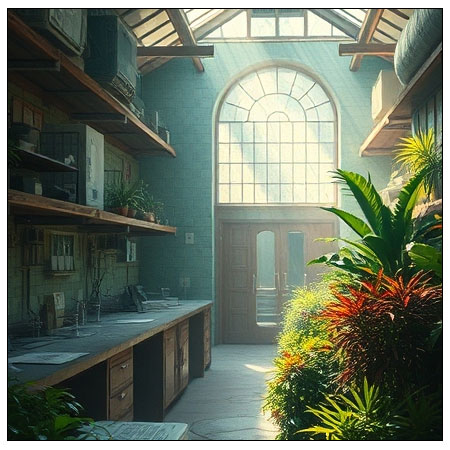
Leon rented a dilapidated research laboratory in a small college town not too far from his point of arrival. Over the next few months Leon meticulously researched the three synthetic elements he knew could alter humanity's self, destructive trajectory: Claudium, Sytanium, and Aquium.
Claudium, a rare superconductor that revolutionizes energy transfer, energy transmission and battery storage systems. Allows electric current to flow frictionless across computer micro channels, and to transmit electrical energy across vast distances without the need for power lines or conduits. Providing no-loss, no heat, energy efficient energy distribution and energy storage systems.
Sytanium, a programmable matter, manipulated at atomic level, enabling the creation of self-repairing materials. Ideal for use in electric vehicles, negative ion propulsion system, non-rejection bionic sensory implants, and electronic devices of all magnitudes.
Aquium, a vital component in water purification, desalination, and the creation of dynamic freshwater. Essential for environmental restoration, space travel hydration and off-world habitat water solutions.
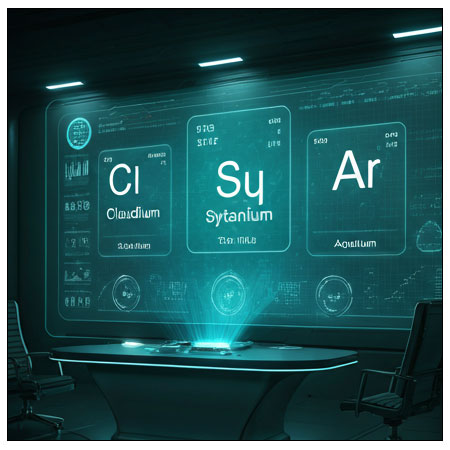
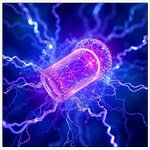

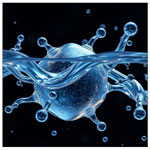
With his wealth of knowledge, Leon set out to synthesize the elements; Claudium, Sytanium, and Aquium using the limited and antiquated resources of 2024. In his time, these elements were critical to the development of advanced technologies that had been realized far too late to save the catastrophic environmental collapse of his future time. Yet, in this past era, the existence of the elements were unknown, and the resources required to create them were scarce and primitive.
Leon knew the task ahead of him would be difficult, near impossible, but he had a unique advantage: the scientific breakthroughs and blueprints of a future that had yet to unfold. Armed with only his expertise and a handful of rudimentary tools, he began the painstaking work of extracting and combining the raw materials to create the new world changing elements, all while avoiding the attention of a world that would not yet understand the significance of his actions.
Every step of the process was a race against time, as the successful synthesis of these 3 elements could hold the key to saving the planet from the ecological disasters that loomed on the horizon.
Six months on from Leon's arrival and with small amounts of the elements synthesized, Leon carefully packaged the samples and set his sights on the world's technological epicenter, commonly known in the 21st century as Silicon Valley. He knew that in order to unlock the full potential of Claudium, Sytanium, and Aquium, he would need the cutting-edge infrastructure and brilliant minds of the region.
Despite the world’s growing chaos, Silicon Valley remained a hub of innovation, technology and power, a place where the most advanced tech companies and research institutions still thrived. Leon’s heart raced as he passed through the secure gateways of this technological haven, knowing that the samples he carried could be the breakthrough needed to catalyze a new era of sustainable energy, climate stabilization, and resource management. If he could convince the right people to take his work seriously, it could spark a chain reaction that would give humanity a fighting chance against the looming disaster.
Yet, Leon also knew of the high risks, one wrong move could make him vulnerable to attack, ridicule, criticism, or retaliation. The doorway for change was closing fast, and once closed, would be closed forever.
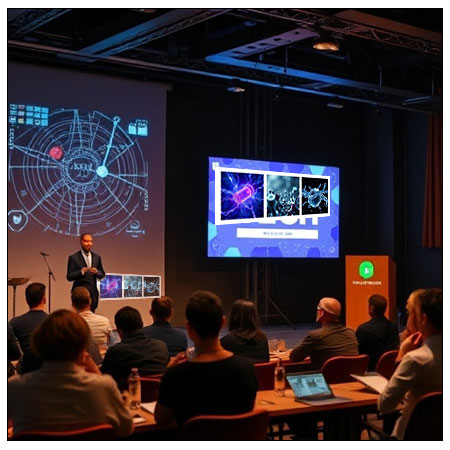
In a secret meeting held in a concealed location within Silicon Valley, Leon introduced the element samples to a select few, a group of eccentric tech billionaires, visionary scientists and forward-thinking engineers who possessed the foresight to understand and appreciate the magnitude of the abilities of all the elements. The samples were unlike anything any had ever seen, and the elements world changing potential was immediately apparent.
With the promise of unprecedented technological breakthroughs, Leon secured boundless funding, allowing him to carve out a vast research laboratory deep beneath Munga Thirri, one of the most desolate desert regions on Earth. Buried beneath the scorching desert sands, the underground research and housing facility stood as a fortress of innovation, where Leon and his team labored relentlessly to create a blueprint to synthesize the purest forms of the three elements for worldwide distribution in the public domain.
Yet, as the elements entered global mass production, a cascade of unintended and unforeseen consequences began to unfold. What was meant to be humanity’s salvation slowly evolved into a series of devastating events, the new element compounds reacted in ways that defied logic, creating unstable reactions and powerful forces beyond laboratory control. What began as a hopeful pursuit of salvation now teetered on the brink of disaster, unraveling in ways that even Leon, with all his knowledge of future technology, had not anticipated.
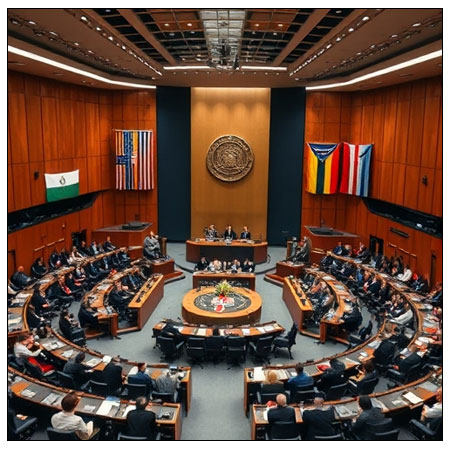
The increase in wealth and funding that Leon had secured, which he had once believed would promote responsible growth and usher in a future of salvation, instead, ignited a fierce and chaotic frenzy. The global mass production of the super-rare elements Claudium, Sytanium, and Aquium, along with the unprecedented technological advancements they promised, triggered a race among the world’s largest multi-billion dollar tech corporations and governments worldwide. Each sought not only control of the elements but also to control total dominance over the burgeoning technologies that have the potential to reshape industries and geopolitics.
The once, altruistic vision of using these elements for environmental restoration and sustainable energy was drowned out by the insatiable thirst for power. Corporate giants and state actors, blinded by greed and ambition, vied for exclusive access to the lab’s breakthroughs, deploying vast resources to secure leverage, manipulate outcomes, and outmaneuver one another.
What had begun as a hopeful effort to save Earth quickly spiraled into a global power struggle with Leon trapped at the center, unable to contain the chaotic forces he had inadvertently set in motion.
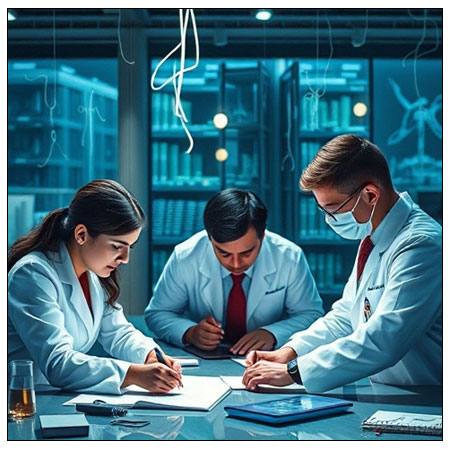
As world researchers, those outside of Leons' facilities, became emboldened by the unprecedented wealth and resources at their disposal, they began pushing the outer limits of ethical and renewable science, eager to harness the full potential of the elements Leon had synthesized and allowed access by the many global research facilities. Driven by the Government and corporate pressure to deliver results and outpace their competitors.
Less-than-qualified researchers started experimenting with more aggressive, low quality synthesizing techniques, often overlooking basic safety protocols that had once governed responsible research. In their haste, critical mistakes were made, volatile reactions triggered explosions, unstable compounds were mishandled, and the very technologies meant to heal the planet began to poison it. Toxic byproducts leaked into the environment, seeping into the air and water, exacerbating the degradation of the ozone layer and accelerating the destruction of tropical rain forests.
What was meant to be a breakthrough for environmental restoration instead became a catalyst for further ecological collapse, with the scientists blind to the larger consequences of their actions. The very foundations of the planet’s fragile ecosystems began to unravel, and Leon, despite his knowledge of the future, could only watch in horror as the nightmare he had sought to prevent was unfolding before his very eyes.

While Leon strategically controlled the synthesis technology of Claudium, Sytanium, and Aquium, the ramifications of his tightly held grip rippled throughout the world with devastating consequences. What had started as an effort to save the planet soon became a catalyst for global instability.
As nations scrambled to secure access to these powerful elements, the geopolitical landscape fractured into chaos. Governments, desperate to stockpile the precious elements for themselves, engaged in covert operations, economic warfare, and outright military conflicts.
Diplomatic relations collapsed, and once, stable alliances shattered as countries turned on one another, each willing to do whatever it took to control the flow of these rare resources. The global economy teetered on the brink of collapse, while the public, unaware of the full scope of Leon's intentions, became pawns in a high, stakes game of power and survival.
Leon, though once a savior in his eyes, now found himself at the heart of a crisis that threatened to push the world into an irreversible spiral of violence and destruction. The very technology that could have healed the planet was now fueling the flames of global conflict and environmental self-destruction.
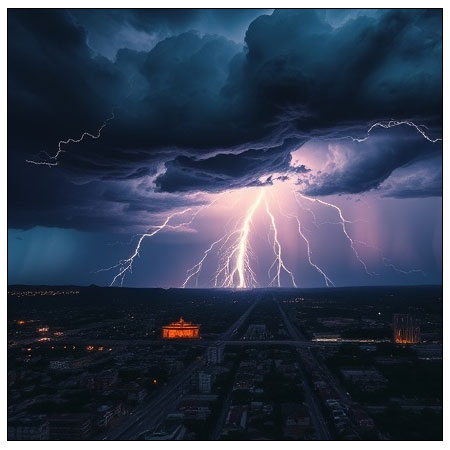
As if sensing the toxic chaos unleashed by human greed and folly, planet Earth reacted with unforgiving vengeance. Superstorms, more ferocious and unpredictable than any in recorded history, rampaged across continents, tearing through cities and ecosystems with ruthless power. Wildfires erupted with the fury of unleashed volcanic spirits, consuming entire forests and reducing once fertile lands to charred wastelands.
The very ground beneath them groaned in protest, tectonic plates, long dormant, began to shift and tremble, as if demanding retribution for the centuries of abuse. Earth’s natural forces, once a delicate balance, were now in full revolt, each disaster a direct consequence of humanity's reckless pursuit of total control. The climate, unrecognizable and hostile, seemed intent on purging itself of the destructive influence that had led it to this brink.
In the face of such overwhelming destruction, Leon could only watch helplessly, knowing that every storm, every fire, every tremor was a manifestation of the planet’s fury, one that he, too, had unwittingly set in motion.
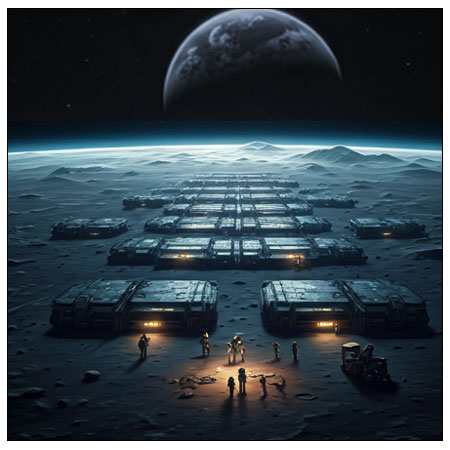
Amid the growing global chaos, as Earth’s systems buckled under the strain of relentless natural disasters, nations began to enact emergency evacuation plans. Whispers of the Genesis Lunar Colony, a covert operation to establish a massive, self-sustaining colony on the dark side of the Moon, began to circulate, igniting both fear and hope across the globe.
This ambitious, clandestine project was envisioned not only as a refuge from Earth’s dying ecosystems but as a stepping stone for humanity’s future, a monumental stepping-stone to Mars. Where a new colony would help ensure the survival of the human race, far removed from the planet’s tumultuous turmoil.
The Genesis Lunar Colony was not just a sanctuary; it was humanity’s desperate last resort, a place where the privileged few would escape, while the majority faced possible extinction. But as the infrastructure for the Genesis Lunar Colony took shape, it became clear that it was a fragile lifeline, doomed to fail if Earth’s destruction continued unchecked. Those involved in the project saw it as their only hope, while others viewed it as a betrayal of those left behind.
And in the back of Leon's mind, the question remained: could the Genesis Lunar Colony truly preserve the human spirit, or would it only delay the inevitable?
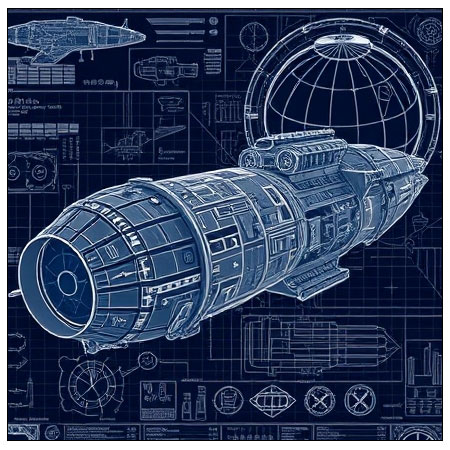
Leon watched in despair as Earth deteriorated before his very eyes, entangled in a web of unintended consequences that he had, in part, set into motion. The planet's ecosystems, once vibrant and resilient, were now unraveling much sooner than his history had portrayed, and the window for salvation was rapidly closing. Desperate, he turned his focus to the last hope he had left, the frontier of outer space.
He poured all his energy into optimizing rocket propulsion technology, aiming to craft an enviro-launch system that could minimize the catastrophic ozone depletion that was worsening with each passing day. Working tirelessly, Leon rallied a team of rocket engineers, electronic technicians and computer scientists, and together, they pioneered a cutting-edge rocket propulsion model, negative ion propulsion technology. An innovation that could launch ships into space without releasing ozone depleting gas and hi-octane fossil fuel emissions. It was a quantum leap in space travel propulsion systems, a solution that could make the Genesis Lunar Colony and the Mars colonization project a reality.
But as each breakthrough emerged, it was met with mounting doubt. Would the fragile low-tech manufacturing systems and the lack of technological understanding of present day be able to withstand the extreme conditions of deep space travel? The uncertainty gnawed at him, and the pressure mounted, knowing that the survival of humanity depended on the untested technologies they were desperately trying to perfect.
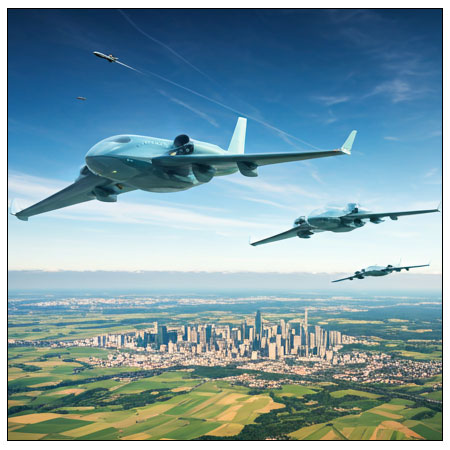
As the planets environmental conditions worsened, the need for the Genesis Lunar Colony and the manufacture of the Titan Class AI-AL android, to be used as a local and off world workforce was paramount. Uneasiness and doubt once again gripped Leon's heart, tightening with every passing day. The pressure was immense, not only did the colonization efforts need to be accelerated, but Earth’s crumbling infrastructure required an immediate technological revolution in robotics and air travel.
Leon had once envisioned a fleet of autonomous battery powered aircraft, gliding effortlessly and silently across the sky, bypassing the need for fossil fuels, drastically reducing the planet's petrochemical dependency, and the burden of heavy metal petrochemical air pollutants. Autonomous aircraft and the Titan Class android workforce could be the breakthrough that could revitalize Earth’s failing logistic systems, and provide around the clock, non-stop manufacturing to buy the much needed time for the Genesis Lunar Colony moon mission to be completed.
Yet, with every new autonomous aircraft prototype Leon's team engineered, there were glitches, critical software errors, in-flight battery combustion, and unforeseen mechanical failures. Each test flight sent them back to the drawing board, time and time again. Each setback drained precious resources, diverting attention from the already over extended efforts on the moon project and further delaying humanity’s last chance for environmental salvation.
The weight of these compounded failures was suffocating, and Leon began to fear that, despite their best efforts, time itself would be the limited resource that betrays them.
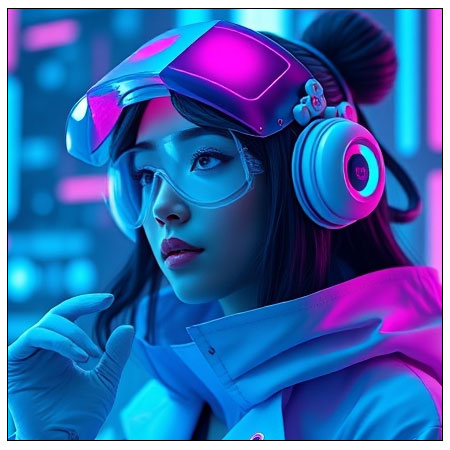
Days melted into weeks, weeks into months, and the pressure on Leon and his team only escalated. It felt as though a cosmic force was weighing down upon Earth itself, a reckoning of consequence unfolding before them, as if the planet’s physical tides were pushing back against their efforts. Just when weariness threatened to overwhelm Leon, and hope seemed to slip further out of reach, a spark of brilliance emerged from an unexpected source.
Mia LeFay, a driven and fiercely determined young chemical engineer, proposed a radical idea with a fresh perspective, one that seemed to stretch way beyond the constraints of her present time knowledge and research experience. Mia suggested creating a fusion-hybrid propulsion system that utilized Claudium in conjunction with Sytanium to construct self-repairing, long-range space travel vehicles, while leveraging Aquium to maintain sustainable, onboard dynamic water generation and water recycling systems. It was an audacious vision, one that fused the planet’s rarest and newest elements in ways never before imagined.
Her concept, though untested and revolutionary, could be the breakthrough Leon and his team so desperately needed. An integrated hybrid solution that could make deep-space travel feasible and support the survival and growth of the Genesis Lunar Colony, and the future Mars Olympus Colonies. Mia’s idea pumped new life and enthusiasm into Leon’s weary heart, offering a glimmer of hope that, perhaps, they could still achieve the impossible and alter humanity’s future fate.

It was a liminal moment, the culmination of science, urgency, and the unyielding desire to avert total environmental collapse. Together, Leon and Mia rallied a diverse, multi-disciplinary team, breaking down barriers of communication and expertise, melding the realms of engineering, geology, chemistry, physics, and human ambition. In a series of late night brainstorming sessions, ideas and concepts flowed like Class V rapids, and with Leon’s steady hand guiding the way, they fusion synthesized the Claudium-Sytanium element needed to crate the new "Mia" class spacecraft, named after Mia LeFay.
The very forces that had once driven humanity along the highway to self-destruction now became catalysts for advanced innovation. As the Mia spacecraft prototype, powered by the hybrid perpetual ion propulsion system, was completed and ready to launch, the team held their collective breath. The Mia spacecraft took to the sky, soaring higher and faster and cleaner than anything they had dared hoped. For a brief, exhilarating moment, as it climbed into the clear blue sky, a flicker of hope ignited within, proof that, against all odds, their work had borne fruit.
It wasn't so much the successful test flight that mattered, it did, but what it symbolized: a new era, a final chance for salvation, and the possibility that humanity could still course-correct its planets future before it was too late.
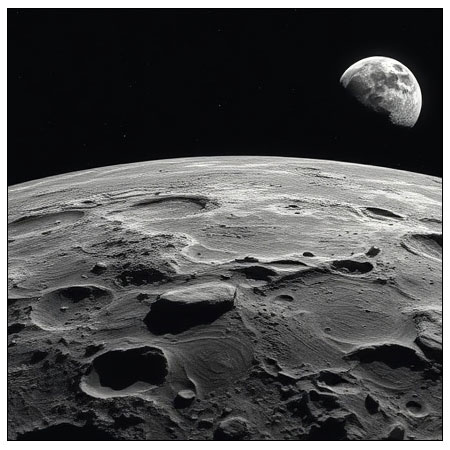
The years flipped by like the pages of a book, and humanity, once fractured and blind to the brink of its own destruction, found itself suddenly aware and unified in purpose. With the undeniable looming catastrophe, the Genesis Lunar Colony project took root with total global support, and the groundwork for a future apart from Earth’s deteriorating environment began to take shape. The Genesis Lunar Colony formed within the shadows of craters and chaos of the Moon, a fragile yet resolute beacon of hope, lit against the backdrop of a planet still very much in turmoil.
While the Earth groaned under the weight of centuries of human err, there emerged an unexpected vitality within the collaborative spirit, that united people across all borders. Engineers, scientists, governments and dreamers from all walks of life, all driven by the collective urgency of survival, worked together in ways that transcended old rivalries and egos. Creating systems, developing solution, and pushing the limits of technological boundaries for life beyond Earth, while continuing to battle for the planet’s survival and regeneration.
The once divided world factions now shared a common goal: to protect and regenerate the remnants of Earth while carving a path to a bold new future. Though the world was terribly scarred, there was an undeniable sense of rebirth, the vitality of human ingenuity and cooperation was beginning to reform a fragile new future for all humanity.
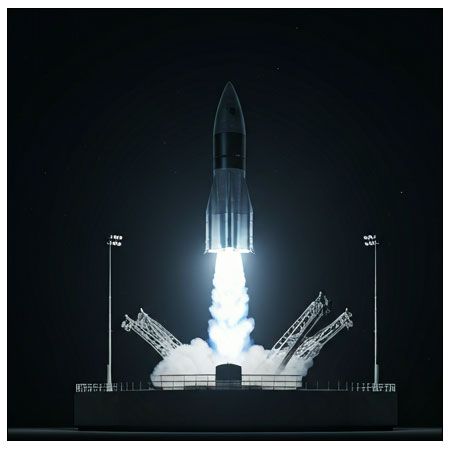
On the day of launching the last Mia spacecraft mission, Leon stood alongside Mia in the mission control room, their eyes fixed on the sleek craft as it surged upward, cutting through the sky and passing through the clouds. The Mia spacecraft was more than a transport vehicle, it was a symbol of what all humanity had fought for, a future for future generations. The vastness of space stretched ahead, and with it the promise of a new beginning for humanity.
Yet, as they watched it disappear, Leon couldn't help but feel the weight of the moment. If the people of Earth had finally woken to the reality of their plight, they must also learn the most vital lesson of all: the strength of unity in diversity, and the power of resilience in the face of overwhelming adversity. It wasn't just the technological advancements or the off world colonies that would ensure humanities survival, it was their ability for all people from all countries to come together, to rise above their differences, and to forge a future built on collaboration and shared purpose.
The Mia spacecraft missions symbolized a collective hope, and in that fleeting moment, as the craft disappeared into the heavens, Leon believed they may just be on the cusp of a new era, one where humanity could at last survive and thrive towards one common goal.
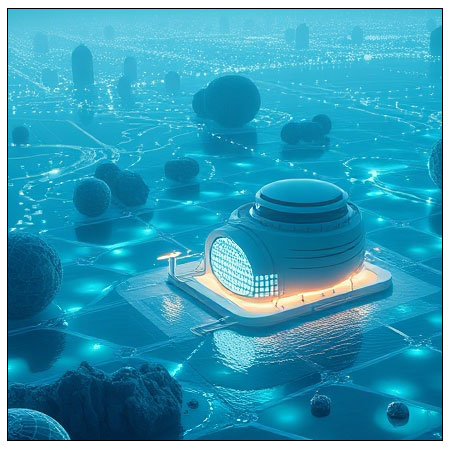
Each new element synthesized wasn't just a breakthrough for survival; it marked a profound rebirth of hope, cooperation, and the vision of a unified planet. With every successful synthesis, the once, fractured world saw not just the promise of technological progress, but the restoration of faith in humanity’s ability to transcend its past mistakes. These elements, born from the ashes of a world on the brink of destruction, became symbols of the collective effort to rebuild, each one a tangible manifestation of the shared will to thrive.
They were more than just physical substances; they embodied the spirit of a new global alliance, one that had learned from the errors of its history and was determined to create a future that was both sustainable and just. As nations set aside their divisions to pool their resources, the present became a gift, a precious moment to rebuild, to heal, and to embrace a future that, for the first time in generations, was open to real possibility.
The future, still unwritten, was now a canvas for the world’s people to shape together, with a shared understanding that their survival depended not on individual success, not on individual power, but on the strength and resolve of their unity.

And in the midst of it all, as the world teetered between the ravages of its past and the fragile hope of a new beginning, Leon thought to himself: every good intention just needs a second chance. He had seen the destructive power of unchecked ambition and greed, but also the incredible resilience of humanity when given the opportunity to change.
The elements they had synthesized, the technologies they had perfected, and the alliances they had forged were all testaments to the belief that redemption was possible, that even after centuries of mistakes, the future was not doomed. It wasn't about erasing the past, but more, learning from it, and using those lessons to shape a better future. Leon realized that, just as Earth needed a second chance to heal, so too did the people of the planet.
It was this belief in second chances, this quiet, steadfast hope, that kept him moving forward, even as the weight of everything they had fought for pressed down on him. In the end, it wasn't about perfection, it was about trying again, trying together, trying with purpose, and never losing sight of the possibility for renewal, success and salvation.

Leon and Mia, having endured the weight of the world’s darkest days together, found peace and joy in the aftermath of their shared struggle. They married, and in the years that followed, their love blossomed into a beloved family.
Together, they raised four beautiful children, each one a living symbol of resilience and hope for a future they had both fought so long and so hard to save. The Munga Thirri research facility, now nestled in the heart of a rejuvenated regenerated world, became a beacon of hope, a place where the lessons of the past were passed down to future generations.
As Earth began to heal, so too did humanity’s spirit, reconciled in unity and bound by the shared promise of salvation. Unable to return to his own time, Leon lived happily ever after in the 21st century, not in a world of perfection, but in a world where the scars of the past were healed by the strength of a collective will and unwavering hope.
In this brave new world, Leon and Mia found peace and contentment, raising their children in a future where love, compassion, and cooperation were the guiding principles. And, although the journey had been fraught with great hardship and uncertainty, they knew that in the end, their greatest victory had been not only escaping humanities bleak and dark future, but knowing they helped create a beautiful and fruitful world, a world worth living for, and a world worth fighting for.
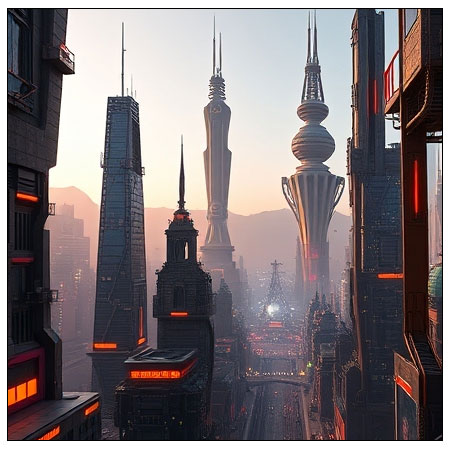
I hope you enjoyed my first sci-fi short story;
Earth 23 45 : A Time of Reckoning.
Stay tuned for more exciting full feature movie story lines and our exclusive picture format short stories, where adventure, intrigue, and unforgettable characters, appear larger than life, right within your very own imaginative brain space.
Whether you're looking for tales of dystopian futures, heart pounding thrillers, or epic journeys through uncharted realms, there's always something new on the horizon.
Each story promises a unique exploration of human emotions, universal themes, and the boundless possibilities of storytelling. We hope our Human-AI collaboration of gripping sci-fi sagas and narratives will transport you to worlds both familiar and fantastical, leaving you on the edge of your seat and yearning for more.
So buckle up, follow and share on the X (Twitter) Platform
... where your next sci-fi adventure notification awaits!
More exciting Sci-Fi adventures are planned in the Earth 23 45 anthology ...
Earth 23 45 : Tides of Turmoil.
Earth 23 45 : Titan Revolution.
Earth 23 45 : Moon Base Genesis.
Earth 23 45 : Mars Terror Forming.
New adventure release dates have not been scheduled.
Release dates will be based on free time,
available resources, and donation support.
Remember to share our Sci, Fi adventures with all your X followers and social media fans!
You can help support the creation of new story lines by making a donation to our movie story lines channel.
If you do decide to support with a donation, or donations, please understand all donations are strictly non-refundable.
BTC: (Network: BTC)
11uhWkPAX7emjxe2gqiZMA88kJWJCqs12
ETH (Network: ERC20):
0x9175d2605b3736eb1d06c925b200e1b5756b958f
XRP: (Network: XRP)
rBgnUKAEiFhCRLPoYNPPe3JUWayRjP6Ayg
Tag/Memo: 162505965
Be sure to fill in XRP Tag Memo number ID,
otherwise your donation will not arrive and will be lost.
BNB (Network: BNB Smart Chain):
0x9175d2605b3736eb1d06c925b200e1b5756b958f
XCH:
xch14tnttz7s3nwwsky3d4tnx34nw0w2v2cl28ag2d3uvrcp4ulm28ssrh08he
(Minimum deposit amount: 0.15 XCH)
USDT (Network: Ethereum):
0x9175d2605b3736eb1d06c925b200e1b5756b958f
If you want to donate with debit or credit card please use the secure Paypal link below.
You can donate any amount from $1 upward via the secure Paypal donation link.
You do not need an actual PayPal account to donate.
All donations, no matter how small, are gratefully and humbly accepted and appreciated.
Click/Tap to donate via Paypal.This is a movie story line of science fiction. Unless otherwise indicated, all the names, characters, images, businesses, places, events and incidents in this publication are either the product of the author's imagination or used in a fictitious manner. Any resemblance to actual persons, living or dead, or actual events is purely coincidental.
©2024 Leslie Worthington -|- Webman GFX Home -|- Last Updated: 20th December 2024